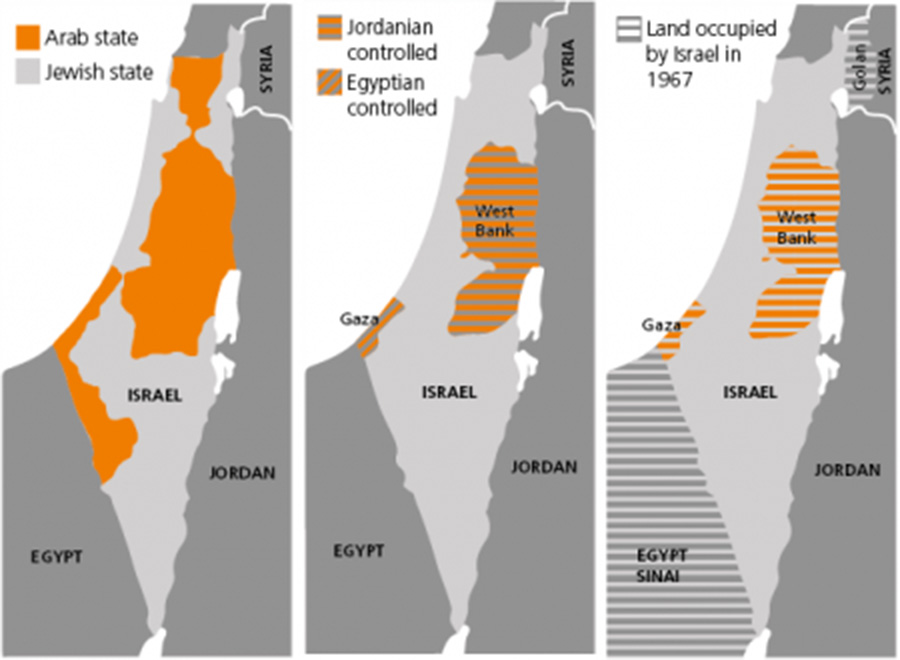1967
It's 1967. You have now been living in the refugee camp for 19 long years.
In the time you've been in Aida refugee camp, you've had three children. Your youngest, Mona, is just five. All of them have only known life in the camp.
You have a modest structure to call home, but it still doesn't feel like it to you. You have to rely on handouts from UNRWA despite the fact that your family owned a significant amount of land in Iqrit which they cultivated crops on. The plan was that your children would take over the land, which was a great source of pride.
Instead, your two sons and daughter go to schools run by UNRWA and your husband helps out as a labourer on Israeli construction sites. In Aida things have been a great struggle.
This year war breaks out, again. By the time the 1967 war comes to an end, Israel occupies the West Bank, including East Jerusalem, and the Gaza Strip (OPT), as well as the Syrian Golan Heights and the Egyptian Sinai. According to figures from Badil, more than one-third of the Palestinian population of the OPT were displaced during the war. Half of them (193,500) were refugees of 1948 displaced for a second time, while 240,000 were displaced from the West Bank and the Gaza Strip for the first time. Up to 95 per cent of these displaced persons went to Jordan, while some found refuge in Syria and Egypt.

